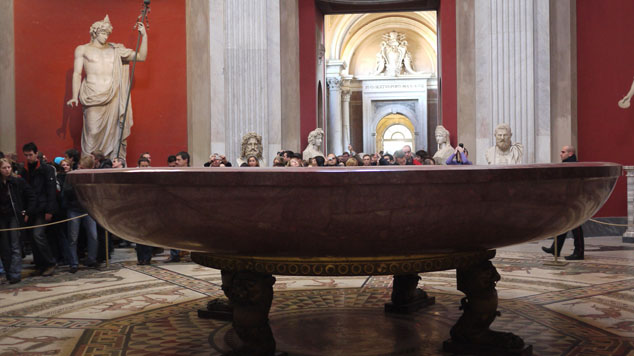So, finally.. ECCE ROMA! Here we are in the Capital, Roma "caput mundi", meaning the "head", the "centre" of the world. After the Egyptians and the long lasting Greeks, who by the way also colonised Italy first, a new people is born, the Romans.
Some say, especially this 150th anniversary of Italy, that Italy was never quite created, however everybody knows that if Italy does exist then its capital is certainly Rome. From the Empire to the Dolce Vita, Rome has been the ultimate red carpet for all ruling classes and for ever growing numbers of so called "normal people".
Funny enough, a "normal person" in Rome will still know more than any counterpart in other places of Italy. Not just the names of the Popes (the Vatican is veeery near), but also all the political intrigues, complots and conspiracies which have been at the heart of Rome and therefore of Italy.
Certainly politics has never been an easy matter, and even in Roman times some crazy characters have indeed made the history through their bizarre acts, like Caligula or Nero. However, with the Empire only a memory in ruins and storybooks, Rome has survived its reputation simply by adhering to it. I mean, imperial Rome is still Rome today. Only, it's been surrounded, not by the barbarians this time, but by local rural people and immigrants from anywhere in Italy, and say, the world.
Despite being an ex-imperial city though, Rome is still somewhat of a provincial town, with its dialect and traditions, except for one detail: the Catholic Church. As the longest serving institution in the world, the Church has dominated these lands for centuries with its Vatican State including Rome and most of central Italy, ending in 1870 with the "Breccia of Porta Pia".
It's not exactly fair to skip Rome and only talk about the Vatican, but it is indeed the biggest peculiarity of Rome, which is the only city in the world hosting two embassies for each country, as two countries are in the same city: Italy, and the absolute monarchy aka Roman Catholic Church. This means we will have two foreign ambassadors in Rome for the same country, as one will be representing his country in Italy, and the other in the Vatican.
Now, there's not enough land in today's Vatican state to actually represent their power - which I personally believe to be much higher than that of Italy - but if you think you're going to Rome but skipping the Vatican Museums you must be crazy.
This said, there is so much more to see in Rome than what tourists actually see, as the proverb goes "One lifettime is not enough to see all the churches of Rome", and that accounts also for the squares, statues, botteghe, restaurants or pickpocketers. Also, one another thing which you will find in great abundance in Italy is the so-called "auto blu", a car especially designed for politicians and other high serving officials, which seem not to have money to buy their own cars. Anyway, Rome, with all its despisable privileges and political intrigues is what I call a city worth visiting 100 times at least.
One last thing: when you go to Campo de' Fiori, which everybody will suggest you as the ultimate place for the night movida (sic!) please do remember that statue in the middle of the square is dedicated to the amazing thinker Giordano Bruno, who was killed precisely there in 1600 by the very same Catholic Church I was mentioning before. As we say in Italian: "Il diavolo fa le pentole, ma non i coperchi", "the devil makes the pots but not the covers". Now, when you understand this proverb you will definitely feel more italian.











































